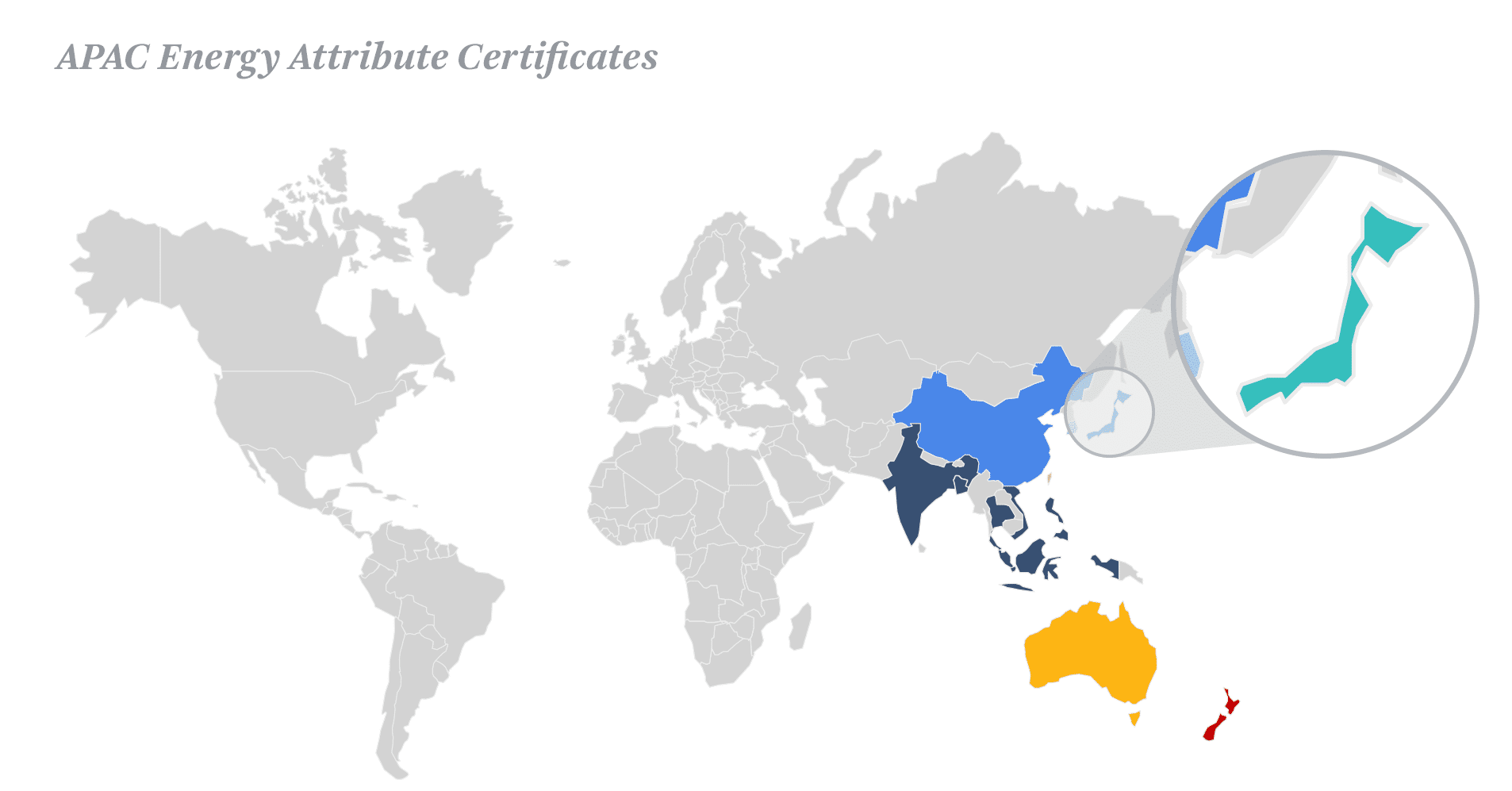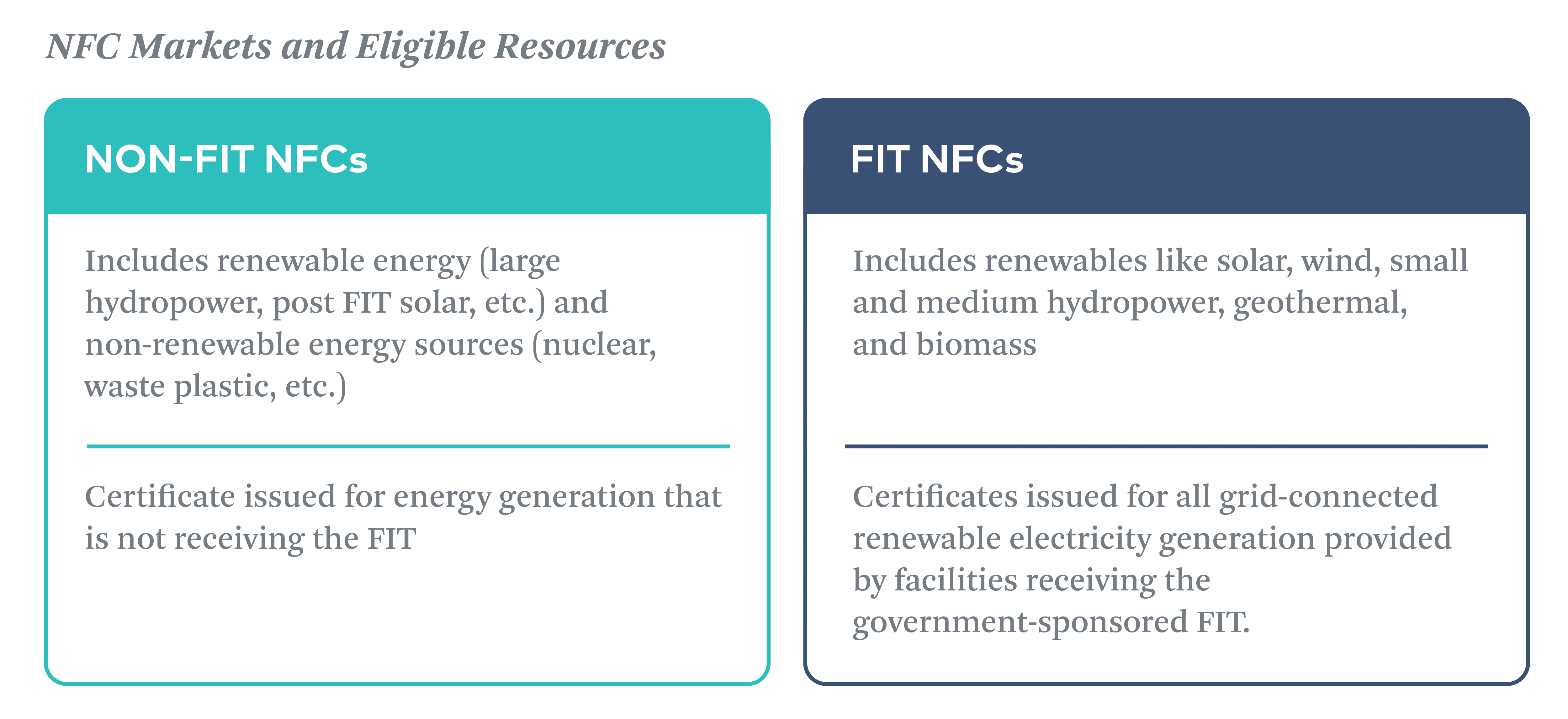
Navigating Japan’s renewable energy landscape as a corporate buyer is no small feat, given the complexity noted in the RE100 Report. The report points out that Japan is one of the most challenging markets for renewable energy procurement, according to RE100’s member companies.
Japan has a comparably low share of renewable energy in its generation mix and several procurement options that each have their own unique challenges and benefits. Yet, for forward-thinking organizations that are committed to reducing scope 2 electricity emissions from their operations in Japan, mastering this market is not only beneficial but essential. A full understanding of the various procurement options available can help ensure your company selects the best fit solution.
In this article we will explain the newest energy attribute certificate (EAC) to enter Japan’s renewable energy market, Japanese Non-Fossil Value Certificates (NFCs), including the product’s background and nuances to be aware of when using NFCs to meet your organization’s renewable energy goals and emissions reduction targets.
What are Japanese Non-Fossil Value Certificates (NFCs)?
Japanese NFCs are EACs used in Japan’s compliance and voluntary renewable energy markets. NFCs can be used to reduce a company’s greenhouse gas (GHG) emissions from purchased electricity, also known as scope 2 emissions, in Japan. NFCs, like all EACs in Japan, are measured and traded per 1 kilowatt hour (kWh) of electricity produced, rather than 1 megawatt hour (MWh), which is standard in the US, EU, and other countries.
◉ NZECS (New Zealand Energy Certificate System)
◉ J-Credit, Japan I-RECs, GECs & Japan NFCs (Non-Fossil Value Certificates)
◉ LGCs (Large-scale Generation Certificates)
◉ TIGRs (Tradable Instruments for Global Renewables)
◉ TIGRs & GECs (Green Electricity Certificates)
NFCs are traded on the Japan Electric Power Exchange (JEPX), which holds NFC sales auctions quarterly. NFCs currently represent the largest share of EACs available in the Japanese renewable energy market, dominating the share of other EAC options in Japan, such as Green Energy Certificates (GECs), J-Credits, and Japan I-RECs, which each have their own set of considerations for buyers. Due to market size, NFCs may offer a lower price point than other options.
Understanding the Japanese NFC Markets: Voluntary & Compliance
NFCs were first created in 2018 by the Japanese government to account for and trade the environmental attributes of renewable energy supported under the Japanese feed-in tariff (FIT) program, which was established in 2012. The purchase of NFCs was originally limited to electricity retailers only, in order to meet their renewable energy sales compliance obligations at that time. However, the market evolved in 2021 when the Japanese Government created two distinct NFC trading markets:
- Non-FIT NFC Market: the current compliance market that remains limited to electricity retailer purchases only; and
- FIT NFC Market: a voluntary trading market that is now open to corporate purchasers and brokers under certain conditions.
FIT NFCs are issued for all grid-connected renewable electricity generation provided by facilities receiving the government-sponsored FIT. Solar, wind, small and medium hydropower, geothermal, and biomass generators all qualify for the FIT. A FIT generator receives the FIT for 20 years, after which time it is considered a “graduated FIT” facility. Unbundled FIT NFCs are now traded on the new FIT NFC market.
Non-FIT NFCs are issued for generation that is not receiving the FIT, including both renewable energy sources (large hydropower, post-FIT solar, and other renewables) and non-renewable energy sources (nuclear, waste plastic). While buyers cannot purchase non-FIT NFCs directly, they can get non-FIT NFCs through bilateral contracts with electricity retailers or through virtual power purchase agreements (VPPAs) with developers.
Market challenges and evolution
The introduction of separate NFC markets and opening of FIT NFCs trades to voluntary buyers initially faced criticism, due to the fact that the certificates were not tracked with their corresponding environmental attribute information. This made it difficult for buyers to understand the source of their purchased certificates and raised concerns that generation issuing NFCs could be double-counted if not properly tracked. Additionally, companies looking to make specific renewable energy purchases to meet the requirements of reporting standards and initiatives, such as the GHG Protocol (GHGP), RE100, and CDP, could not guarantee that buying NFCs would be a compliant purchase.
Fortunately, improvements have been made. JEPX now tracks all FIT NFCs, although the environmental attribute information is not included at the time of sale in quarterly auctions. Auction participants, including brokers and end-use buyers, can apply to add the corresponding attributes to the NFCs after purchase. Since the August 2023 auction, auction participants are now also able to request certain environmental attributes for their expected purchases ahead of the auctions. This change allows participants to ensure their NFCs will meet specific criteria, such as technology type or online date. As before, the attribute information is physically added to the FIT NFC after the auction.
When tracked with corresponding environmental attributes and issued from qualifying facilities, FIT NFCs are recognized for renewable energy claims by CDP and RE100.
Observe the validity period
NFCs are bound by strict vintage rules for consumption claims by voluntary buyers. FIT NFCs are valid for consumption only from April of their issuance year to June of the following year, at which time they automatically expire. Again, the good news is that the staggered issuance and validity period will not affect the eligibility of FIT NFCs for scope 2 claims under the various reporting standards. With awareness of these nuances, FIT NFCs may be an attractive, lower-cost option to meet an organization’s renewable energy goals in Japan.
Important takeaways
Advantages of FIT NFCs:
- Newest EAC available for voluntary scope 2 claims in Japan
- Cost competitive given market supply
- Environmental attribute information is tracked and can be added to FIT NFCs to ensure compliance with GHG Protocol, RE100, and CDP requirements
Factors to be aware of:
- Environmental attribute information is not provided at auction date; buyers should ensure it is added
- Buyers may be able to request certain environmental attributes such as online date or specific energy technology
- As NFCs are issued in kWh, to make clear renewable energy consumption claims with NFCs, buyers should discuss kWh or MWh consumed as opposed to the number of certificates purchased
Interested in exploring the different renewable energy products in Japan, and learning if FIT NFCs are right for you? Get in touch with us.



